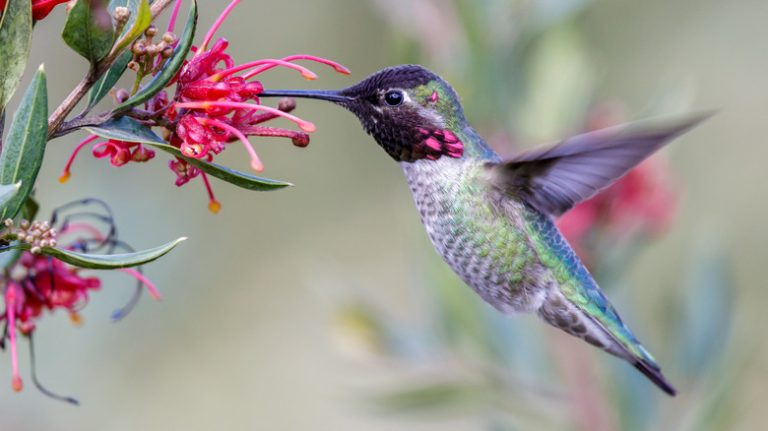If you’re looking for a unique and eye-catching plant to consider for your garden, look no further than the Persian Shield, also known as Strobilanthes dyeriana. The Persian Shield originates from Myanmar, Burma, and appears stunning with its bold metallic shades of purple and silver.
One of the reasons gardeners love this plant is that it grows well both indoors and outdoors. Indoors, the Persian Shield prefers temperatures between 60-85°F (15-29°C), while outdoors it can thrive in partial shade or bright filtered sunlight. It is a fast grower, so you’ll need to keep up with watering and provide it with moist, well-drained soil.
When it comes to caring for Persian Shield, one of the questions frequently asked is about pests. While it has its fair share of pests, here are some solutions to keep them at bay: increase humidity, provide good air circulation, and regularly spray with an insecticidal soap. It’s also important to prune the older, leggy stems to maintain a bushier appearance.
During the winter months, Persiаn Shield plants are not cold-hardy and can be killed by frosts. Therefore, if you’re going to keep it outside, make sure to take it indoors when the temperatures drop. As for watering, during the colder months, you won’t need to water as frequently as the plant requires less moisture.
In conclusion, the Persian Shield is an attractive and low-maintenance plant that can bring a unique touch to any garden. Whether it’s the bold metallic foliage or its easy-to-care-for nature, this plant is a favorite among gardening enthusiasts. So, if you’re looking to add a splash of color and beauty to your outdoor or indoor space, the Persian Shield is definitely a top pick!
Care Of Persian Shield Plant Tips For Growing Persian Shield Indoors
The Persian Shield plant, with its amazing metallic colors and beautiful patterns, is a favorite among gardeners. Whether you’re a seasoned grower or just starting out, here are some tips to help you care for your Persian Shield plant:
Light and Temperature
Persian Shield plants prefer bright, indirect light. They can tolerate some direct sun outdoors, but it’s best to keep them shaded from intense afternoon sunlight. Indoors, place your plant near a window where it can receive bright, filtered light.
These plants also prefer warm temperatures between 60-80 degrees Fahrenheit (15-27 degrees Celsius). Avoid exposing them to temperatures below 50 degrees Fahrenheit (10 degrees Celsius) as it can cause damage to the leaves.
Watering and Humidity
Keep the soil evenly moist, but not soggy. Allow the top inch of soil to dry out before watering again. During the summer months, you may need to water your Persian Shield plant daily to maintain proper moisture levels.
These plants also appreciate high humidity. Consider placing a humidifier nearby or misting the leaves with water to increase humidity levels. Avoid placing your Persian Shield plant near drafts or vents that can cause fluctuations in humidity.
Soil and Fertilizer
Use well-drained soil with good organic matter for your Persian Shield plant. A mix of peat moss, perlite, and compost works well. Adding a layer of mulch around the plant can help retain moisture and regulate soil temperature.
Fertilize your Persian Shield plant monthly during the growing season with a balanced, water-soluble liquid fertilizer. Follow the instructions on the packaging for proper application.
Pests and Diseases
Persian Shield plants are relatively pest-free, but they can occasionally have issues with aphids, whiteflies, or scale. If you notice any pests, use an insecticidal soap or a mild dish soap and water solution to treat the infestation.
Watch out for root rot, which can occur if the soil is too moist and not well-drained. To prevent diseases, avoid over-watering and make sure your plant has adequate air circulation.
Propagation
If you want to propagate your Persian Shield plant, you can do so by taking stem cuttings. Cut a healthy stem just below a node and place it in a glass of water or moist soil until roots develop. Once roots have formed, you can transplant the cutting into a pot with well-draining soil.
Whether you choose to grow your Persian Shield plant indoors or outdoors, following these care tips will help ensure that you have a healthy and vibrant plant with its distinctive coloration. Enjoy the beauty of this perennial plant!
Persian Shield Plant
The Persian Shield plant, scientifically known as Strobilanthes dyeriana, is a stunning perennial that is native to Myanmar (formerly Burma) in Southeast Asia. It is highly prized for its bold and vibrant foliage, with leaves that feature an iridescent purple coloration.
This plant is relatively easy to care for, making it a popular choice for both indoor and outdoor gardens. It is a tropical plant that thrives in warm and humid environments, so it is important to provide it with the right conditions to ensure its success.
When growing a Persian Shield plant, it is important to consider its needs for water, light, and fertilization. It prefers to be grown in well-drained soil that is rich and moist, but not overly wet. It is best to water the plant evenly and regularly, allowing the soil to dry slightly between waterings. You can increase humidity levels by misting the leaves or placing a tray of water near the plant.
For optimal growth, the Persian Shield plant requires bright, indirect light. It can tolerate some direct sunlight, particularly in the morning or late afternoon, but it is best to avoid exposing it to intense midday sun. If you are growing the plant indoors, place it near a bright window that receives filtered sunlight.
When it comes to fertilization, it is recommended to use a balanced liquid fertilizer every 2-3 weeks during the growing season (usually spring and summer). Be sure to follow the instructions on the fertilizer package to avoid over-fertilizing, which can cause leaf burn.
In terms of temperature, the Persian Shield plant prefers warm temperatures between 65-80°F (18-27°C). It is sensitive to cold and can be damaged or killed by frosts and freezing temperatures. If you live in a colder climate, it is best to bring the plant indoors or provide it with protection during the winter months.
Propagation of the Persian Shield plant can be done through stem cuttings. Simply take a cutting from a healthy plant, remove the lower leaves, and place the cutting in a container with well-drained potting soil. Keep the soil moist and provide bright, indirect light. The cutting should develop roots within a few weeks.
When it comes to pruning, the Persian Shield plant can become leggy over time. It is recommended to pinch back the tips of the stems to encourage bushier and more compact growth. Pruning can be done throughout the year, but it is best to avoid extensive pruning during the winter months when the plant is dormant.
Overall, the Persian Shield plant is a beautiful and easy-to-grow plant that adds a vibrant splash of color to any garden or indoor space. With the right care and attention, it can thrive and become a stunning centerpiece in your plant collection. If you have any questions or issues with your Persian Shield plant, don’t hesitate to ask a gardening expert or reach out to your local UF/IFAS extension office for further guidance.
Growing Persian Shield
Persian Shield is a stunning plant with metallic purple leaves that can add a pop of color to any garden. It is a perennial plant, meaning it can survive year after year with proper care. If you’re interested in growing Persian Shield, here are some tips to help you get started.
Planting: Persian Shield can be grown both indoors and outdoors. When planting outside, wait until the threat of frosts has passed and the temperatures stay consistently above 60°F (15°C). Choose a location with well-draining soil and good air circulation. Plant the Persian Shield in a balanced mixture of soil and mulch to maintain proper moisture levels.
Light and Temperature: Persian Shield thrives in bright, indirect light. It prefers temperatures between 60°F (15°C) and 80°F (27°C). If growing indoors, place it near a south or west-facing window to provide enough light. If growing outdoors, provide some shade during hotter parts of the day.
Watering: Persian Shield needs to be watered evenly, allowing the top inch of soil to dry out before watering again. Avoid overwatering, as it can cause root rot. During hotter months, you may need to increase the frequency of watering to prevent the plant from wilting. Using a liquid fertilizer every two weeks is also recommended to keep the plant healthy.
Propagation: Persian Shield can be propagated by taking stem cuttings. To do this, remove a healthy stem with a few leaves from the main plant. Remove the lower leaves and plant the stem in a moist potting mix. Keep the soil consistently moist and place the cutting in a warm and bright location. After a few weeks, roots should develop, indicating successful propagation.
Pruning: Persian Shield benefits from regular pinching and pruning. This helps to promote bushier growth and prevent legginess. Pinch off the growing tips of the plant to encourage branching. Pruning can also help control the size of the plant.
Common Problems: Persian Shield is generally a low-maintenance plant, but it can be susceptible to certain problems. Overwatering can lead to root rot, while too little water can cause wilting. Fungal issues, such as leaf spot and powdery mildew, can also occur in humid conditions. To prevent these problems, avoid overhead watering and promote good air circulation around the plant.
Conclusion: Growing Persian Shield can be a rewarding experience for gardeners looking to add some color and interest to their gardens. By providing the right care, this stunning plant will thrive both indoors and outdoors. Don’t hesitate to ask questions or seek further instructions from gardening publications or local experts. With proper care, Persian Shield can be a beautiful addition to your garden.



